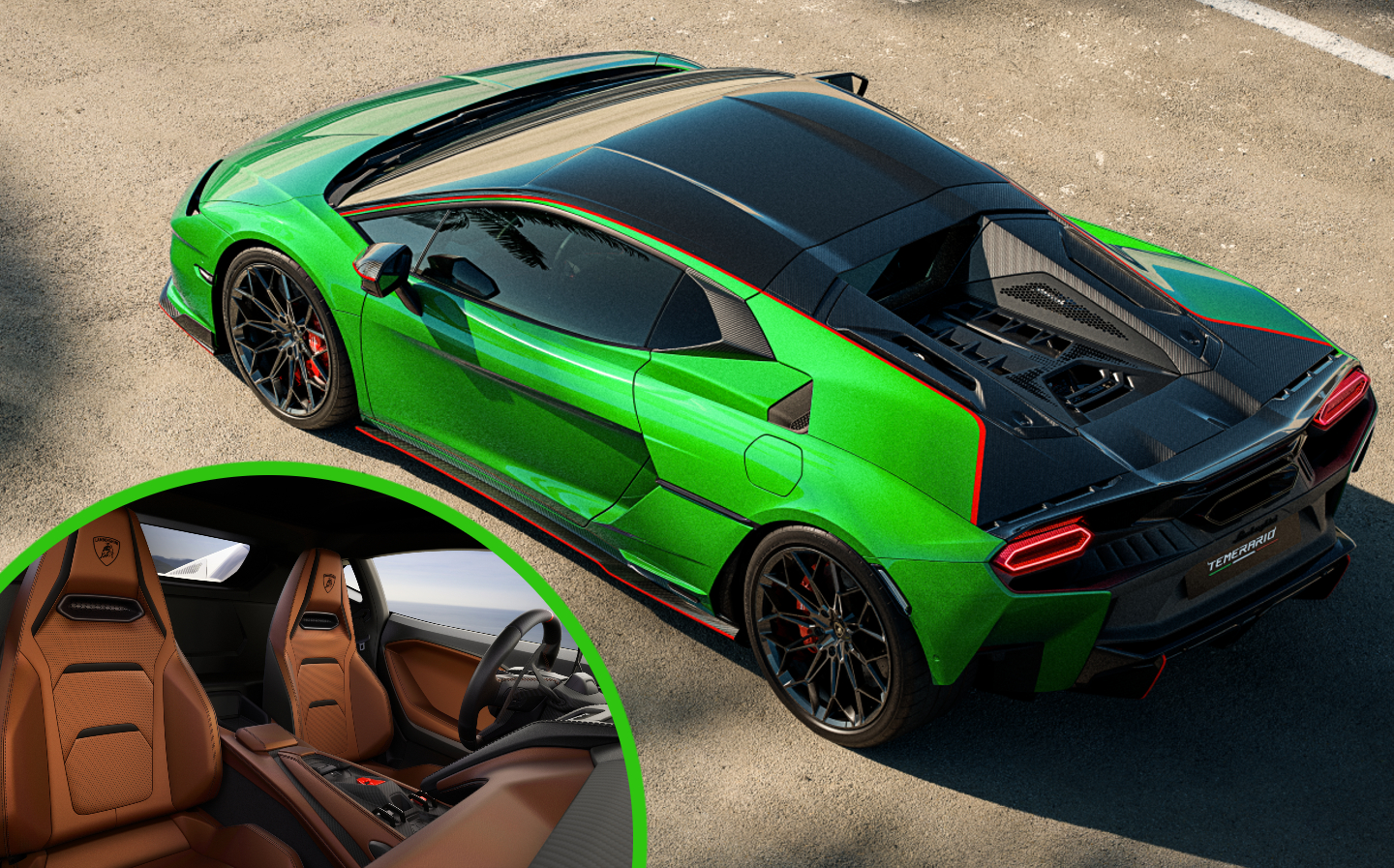Son of Huracán: Lamborghini boss on why 907bhp Temerario hybrid is firm's most comfortable supercar ever
Supercars should be uncomfortable? Not according to Lambo chief Stephan Winkelmann
For tall people, climbing (or rather dropping down) into a Lamborghini has only been possible with some amount of contortion. Just ask Jeremy Clarkson, who in 2022 had trouble squeezing his 6ft 4in frame into the range-topping Aventador Ultimae: “I had to put both my feet in the far corner of the footwell, then push my buttocks over the transmission tunnel before snapping my spine in half to get my head in. And, once there, I wished they’d sent a convertible because headroom is extremely marginal.”
Times are changing, though. Lamborghini’s boss has claimed the new Temerario, the Italian firm’s hybrid super sports car due to replace the Huracán next year, will be firm’s most comfortable super sports car (supercar to you and me) ever, even for tall drivers.
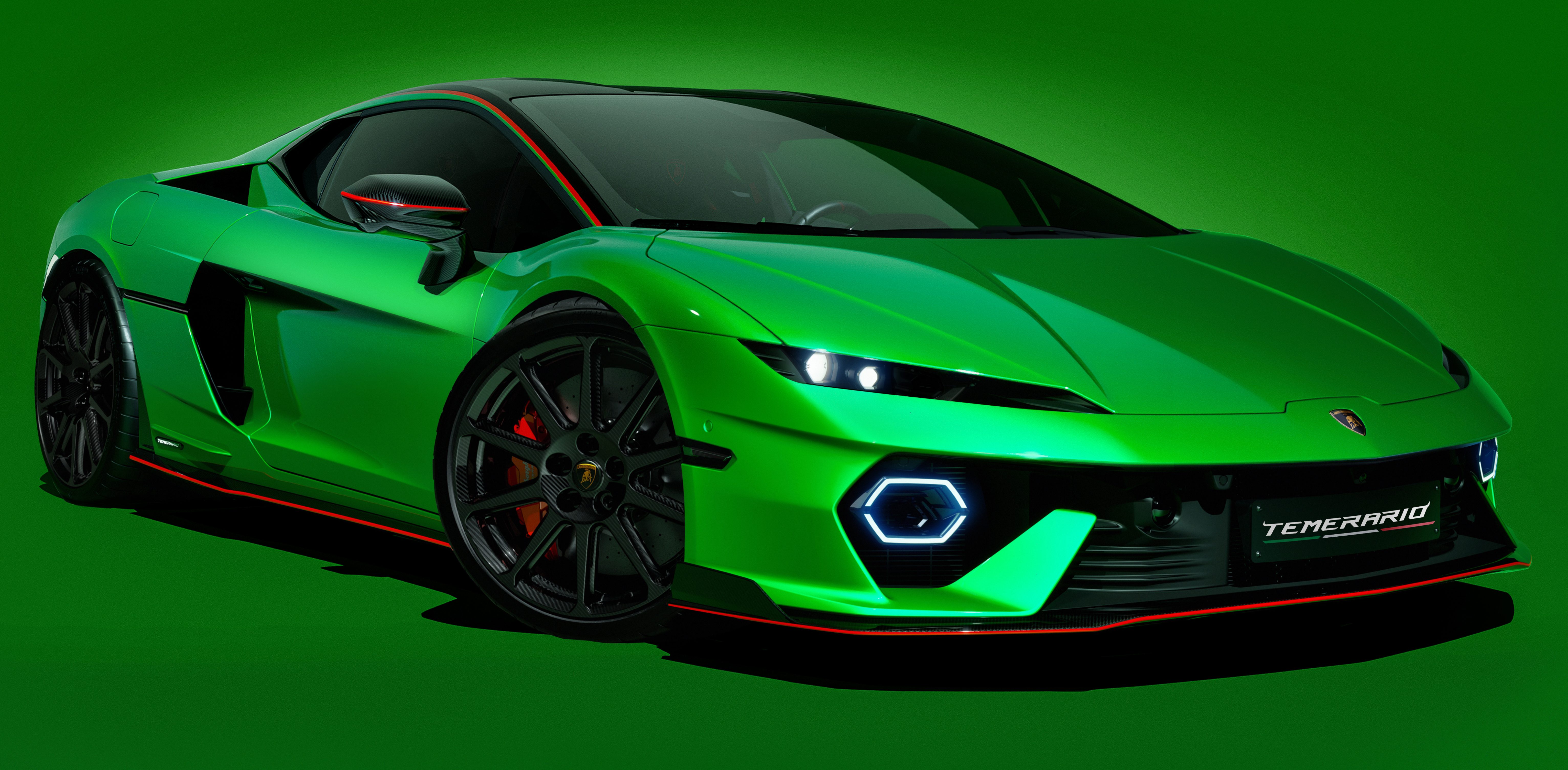
Stephan Winkelmann said the Lamborghini Temarario, unveiled today at Monterey Car Week, was designed with roominess in mind from the get-go because driver comfort is integral to driving pleasure.
“A supercar, in my opinion, should be developed in a way that when you go on the race track, you’re feeling the car and not the uncomfortableness of your seating position,” he told Driving.co.uk. “It has to help you to be a better you, and if it fits like a glove, then we achieved it.”
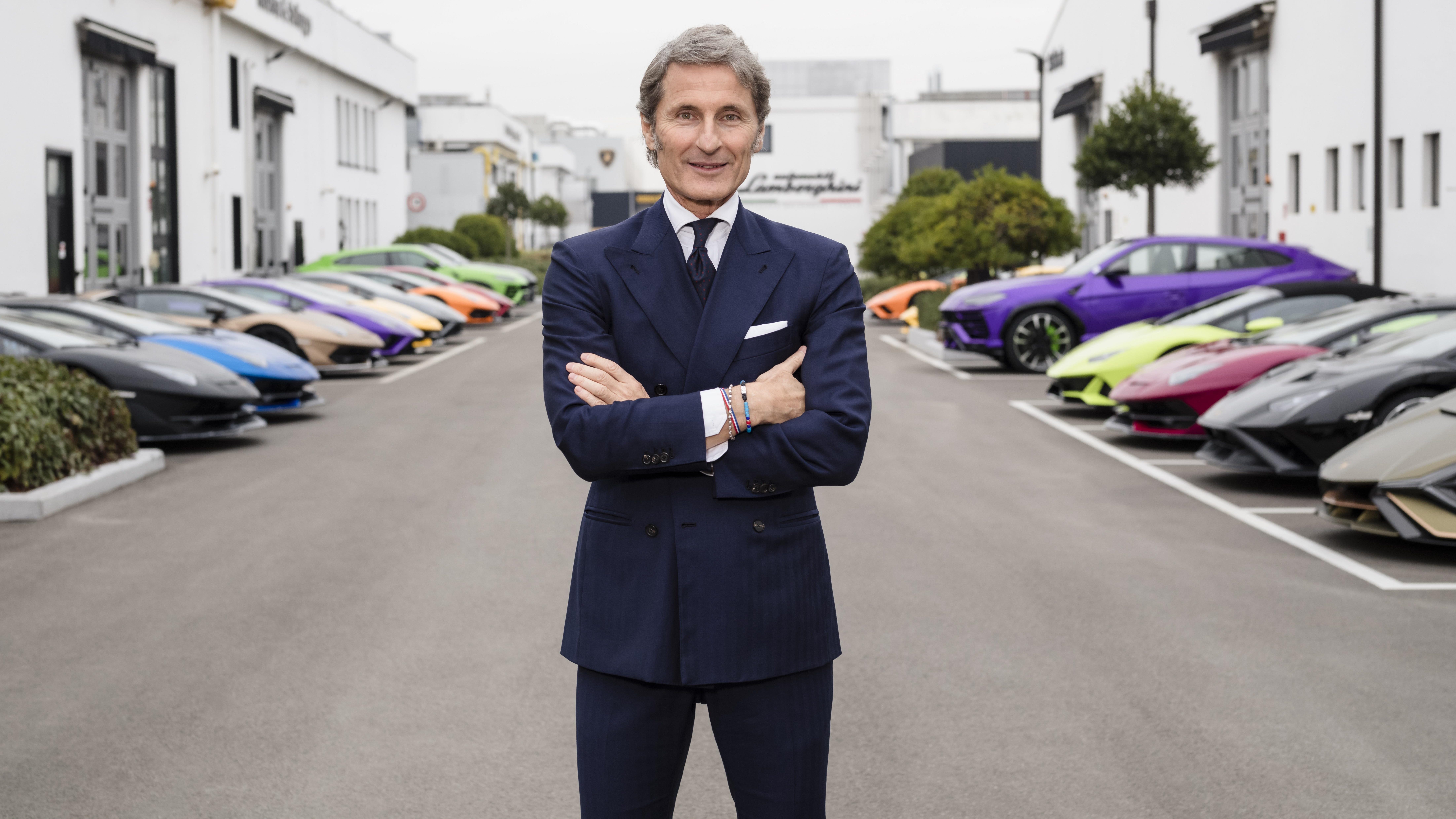
The Temerario is not a car designed for 500-mile motorway cruises without feeling fatigue, he clarified; performance, drama and deft handling were all still priorities in the development process.
“It’s for sure a different car than a limousine or SUV, so therefore we have a different target to achieve,” he said. “The combination should not jeopardise performance because you’re too uncomfortable.
“If I drive the cars of the 1960s and ‘70s [on a racing circuit], after a while, when you have to do more than one lap, you feel it. And I’m not a race car driver, but I’m used to going on the race track and I’m used to driving multiple laps, so for me this is important.”
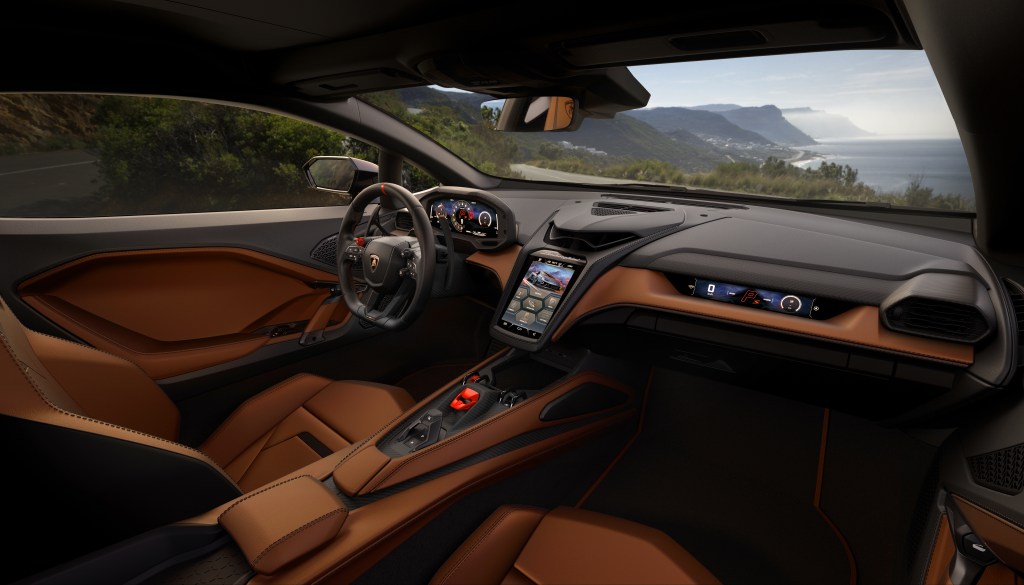
Winkelmann highlights headroom as a particular focus, in that tall drivers should even be able to put on a helmet and still fit comfortably in the Temerario — something that definitely wouldn’t have been possible for Clarkson in either the Aventador or Huracán.
“I could speak for hours about this because for me, this balance is not easy to maintain or to keep or to develop, but I believe it is paramount to give you also the feeling that you are managing the car, not that the car is managing you, or exhausting you.”
What is the Lamborghini Temerario?
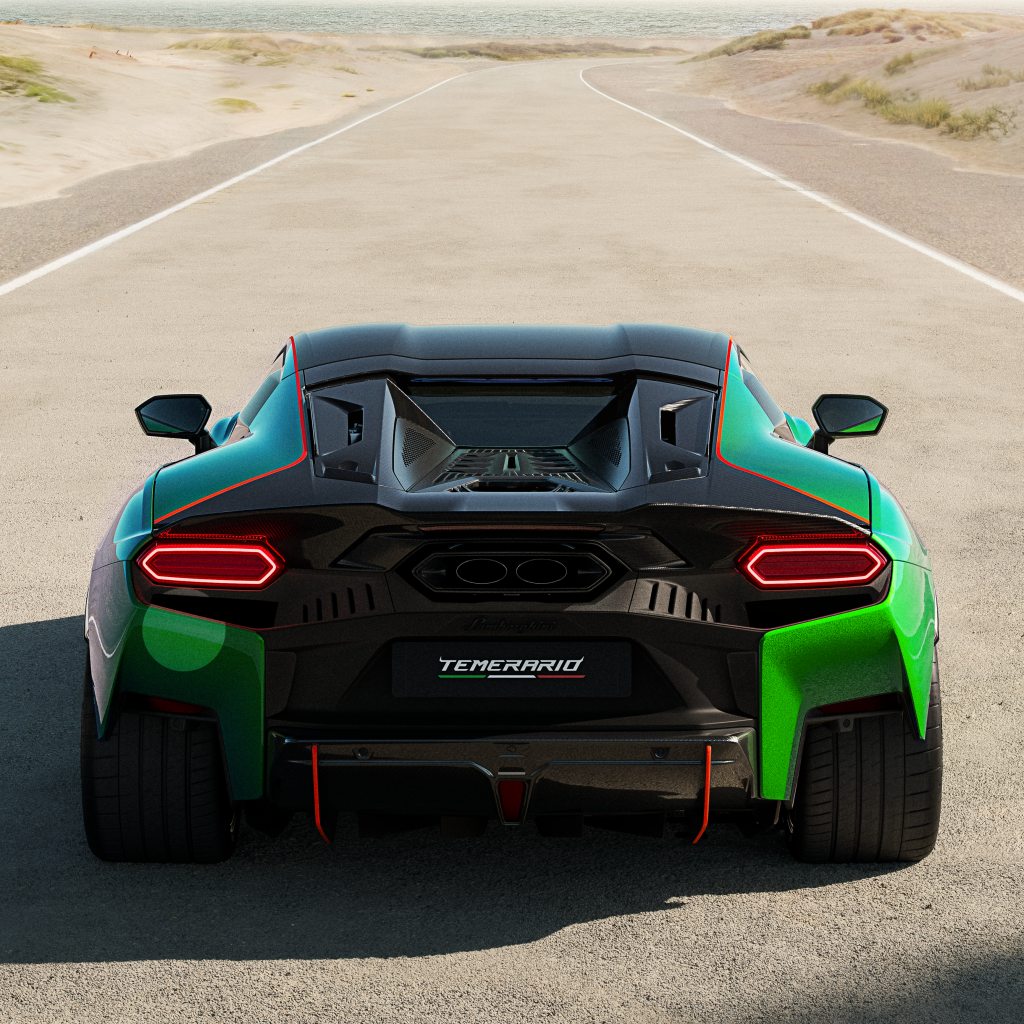
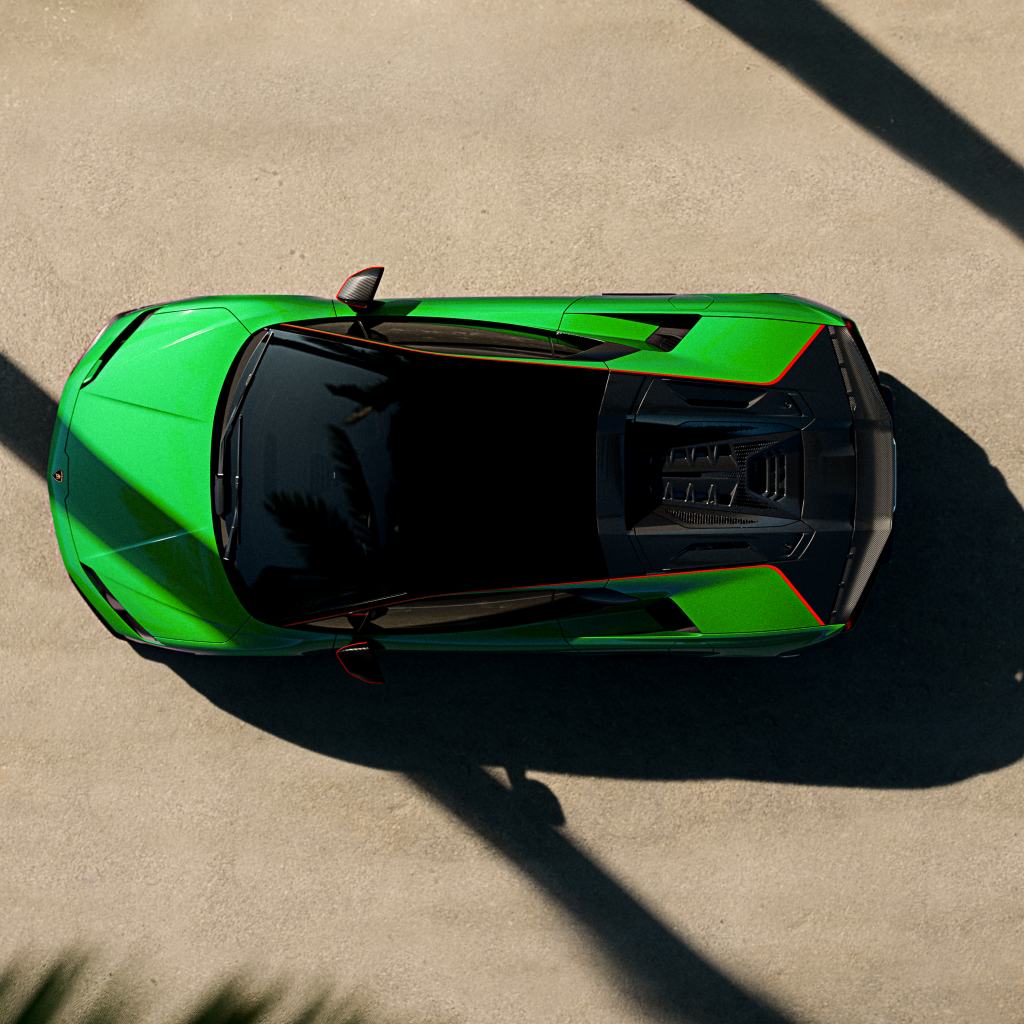
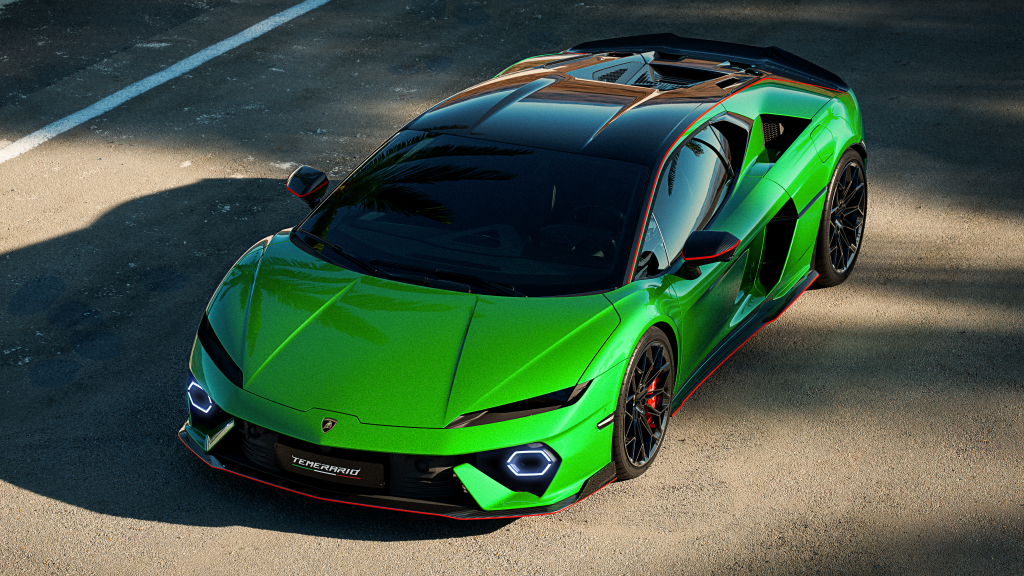
The Lamborghini Temerario is a plug-in hybrid supercar featuring an all-new, twin-turbo V8 engine (replacing the Huracán’s lauded V10) that screams its way up to a maximum of 10,000rpm; the first production V8 to reached such speeds.
Alone it produces 789bhp (between 9000 and 9,750rpm), but bolstered by three 110kW (148bhp) electric motors the combined output is a fearsome 907bhp and 590 lb ft of torque (twisting force).
The use of electric motors — one built into the V8 housing, between the engine and clutch, and the other two acting on the front wheels — offers the potential to significantly outperform the Huracán thanks to the immediate torque delivery during acceleration, removal of any turbo lag whatsoever, and “torque fill” during the dip in revs while paddle-shifting up through the eight-speed dual-clutch gearbox.
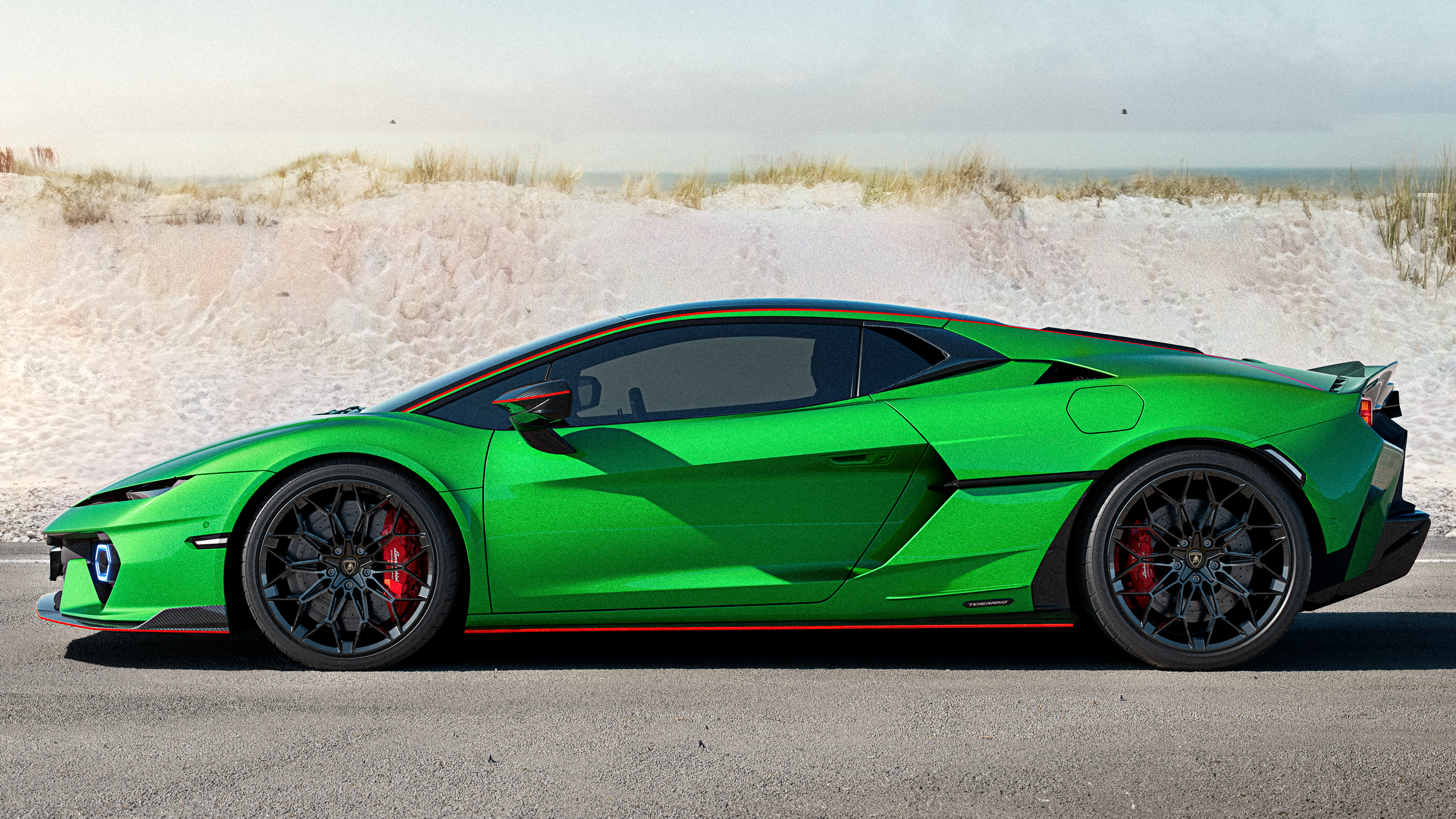
The Temerario’s vital statistics include a top speed of 211mph and 0-62mph time of just 2.7sec, which is a significant jump in performance from the Huracán Evo’s 200mph and 3.1sec.
The e-motors also enable highly responsive “torque vectoring” — the distribution of power to each of the four Bridgestone Potenza Sport-shod wheels to improve cornering speeds and stability.
Power is stored in a high voltage battery, with a capacity of 3.8kWh, positioned in the central tunnel of the car. It can be plugged into the mains and charged at up to 7kW, which takes it from flat to fully charged in 30 minutes, or via regenerative braking or directly using the V8 engine.
Lamborghini’s electrification plan
The Temerario is the third Lamborghini model to get the hybrid treatment, after last year’s Revuelto (the Aventador’s V12 hybrid-powered successor) and the Urus SE SUV, which was announced in April this year.
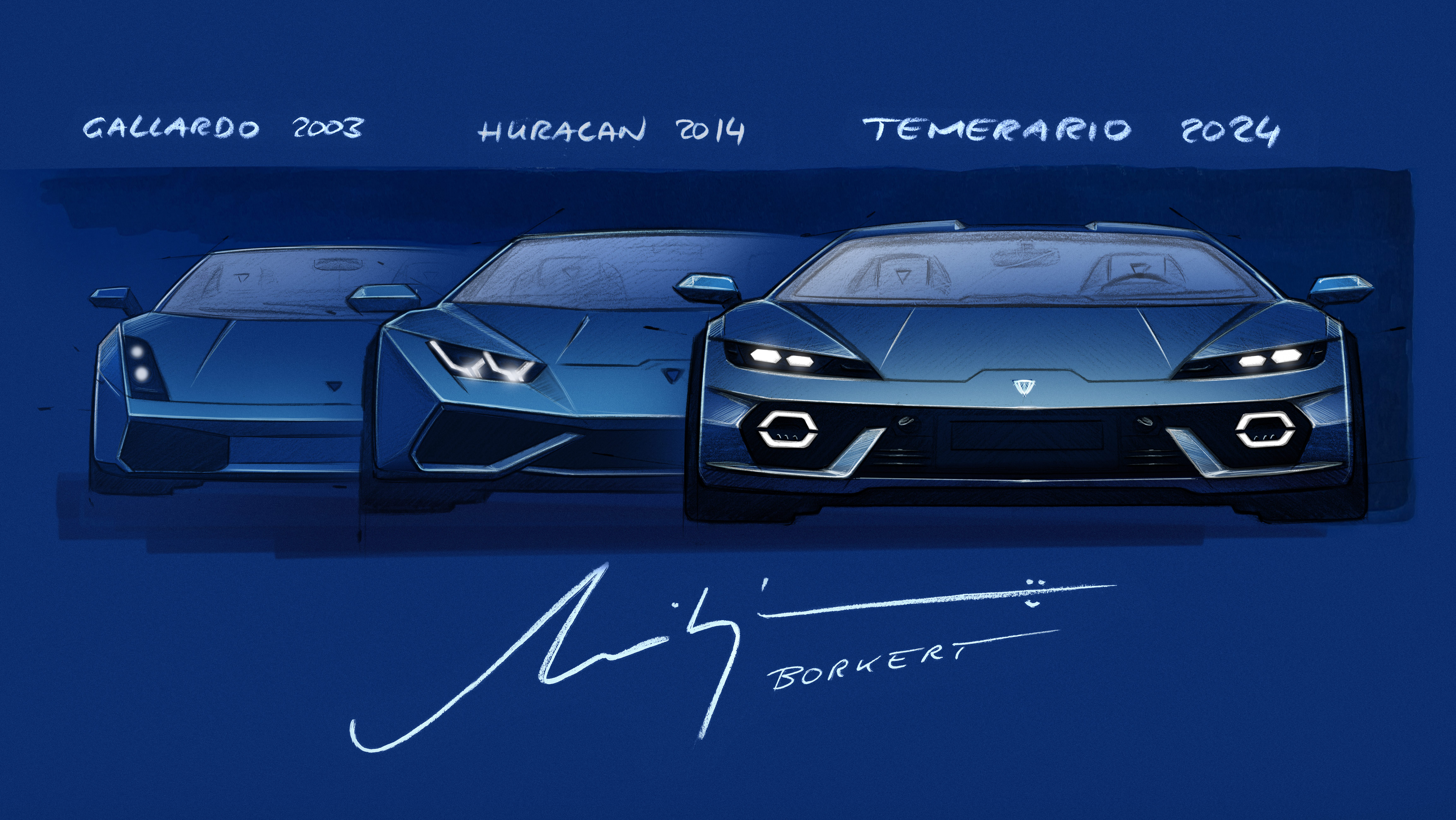
Hybridisation is part of Winkelmann’s “Direzione Cor Tauri” plan, which will see the entire model range electrified by the end of this year, with the goal of cutting CO2 emissions in half by the beginning of 2025; the Temerario emits 50 per cent less CO2 than the Huracán, according to Lamborghini. The brand’s first pure-electric car is expected before 2030.
As with most (but not all) Lamborghini models since the Italian firm’s first car, the Miura, was launched in 1966, the Temarario name has a bull-fighting connection: in this case, it is named after a famous bull from 1875. Temerario also happens to mean “fierce”, or “courageous”, in Italian.
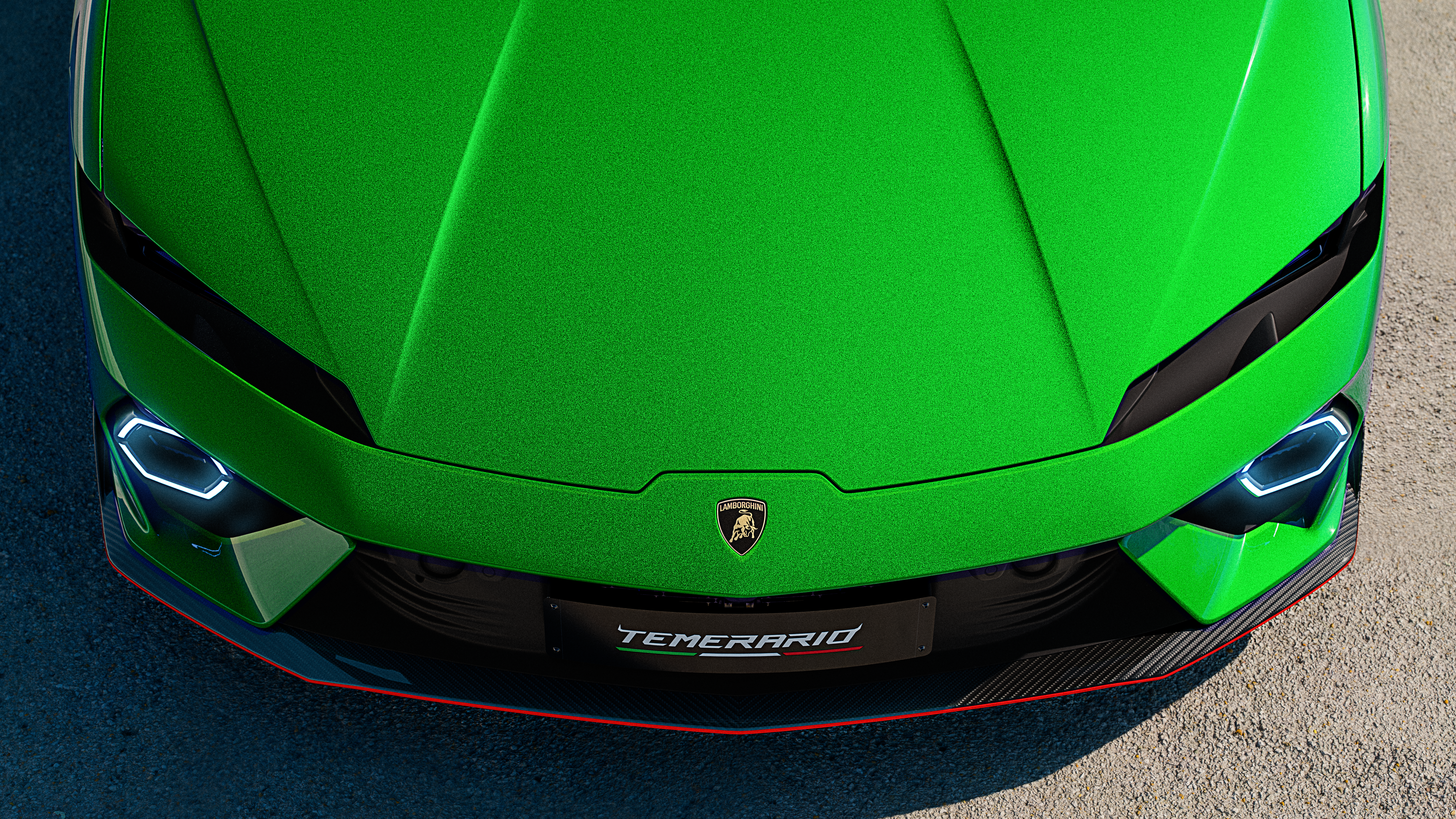
Its design incorporates elements from the past and present. A new-for-Lamborghini stylistic feature involves hexagon-shaped daytime running lights, giving a classic Lambo signature a 21st century twist. The V8 engine, which is not used in any other VW Group vehicle, can be viewed through the rear panel and is framed by the rear spoiler.
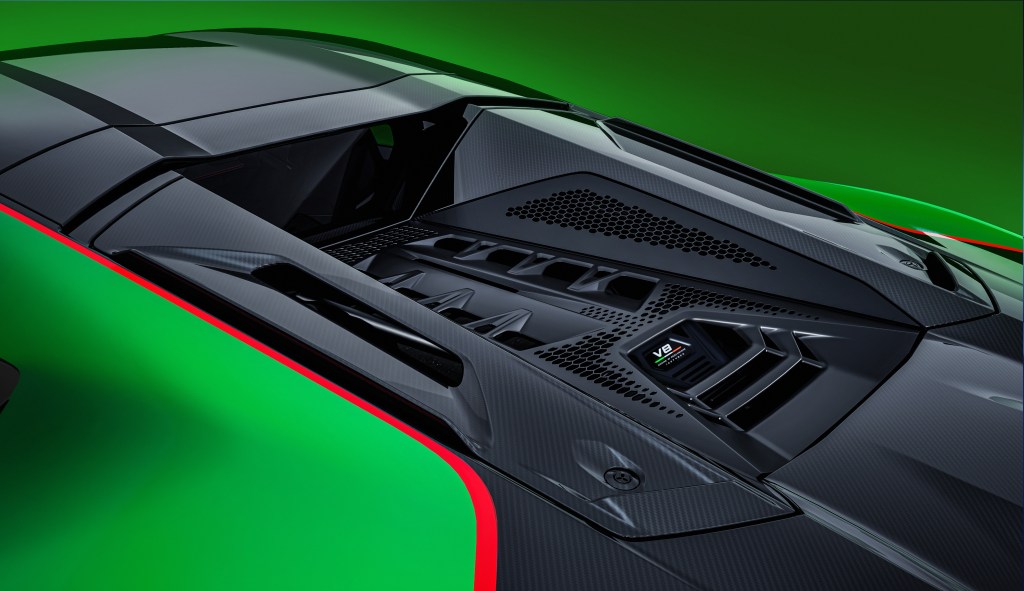
Combined with deflectors built into the air intakes at the front, and underbody vortex generators that create ground effect, sucking the car to the asphalt at speed, aerodynamic load is 118 per cent higher than that of the Huracán Evo, according to Lamborghini.
And that increases to 158 per cent if customers opt for the Temerario’s Lightweight Pack, aimed at those who wish to spend time on track with their car. When selected, a number of body parts — including the front splitter, underbody panels and engine cover — are replaced with carbon fibre alternatives, while the side windows are swapped out for polycarbonate versions, for a total weight saving of 12.65kg. The regular Temerario’s total dry weight is 1,690kg.
Emotion, not exhaustion
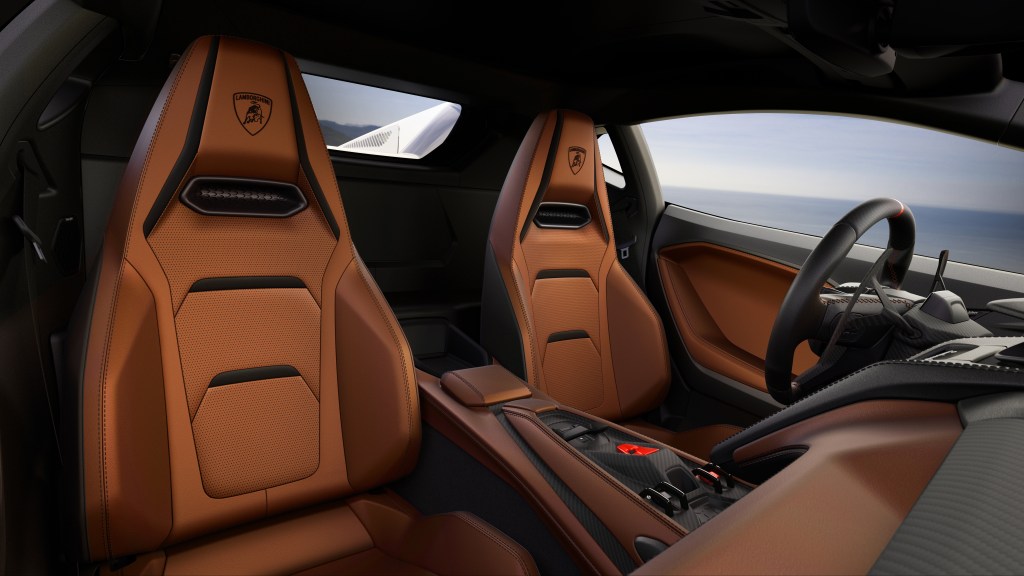
But despite all the performance enhancements, Winkelmann ensured that drivers are provided with unprecedented levels of comfort. The Temerario’s aluminium underpinnings feature a longer wheelbase (the distance between the centre of the front and rear wheels) than the Huracán, freeing up legroom, while the roof is higher and new “comfort seats” have been introduced.
Enhanced technology includes an updated touchscreen system with driver telemetry, a “memories recorder” that incorporates a dashcam and telemetry, and is designed to help drivers improve their racing skills on track but also record and share video clips via Lamborghini’s Unica smartphone app. The Temerario also includes augmented reality satellite navigation.
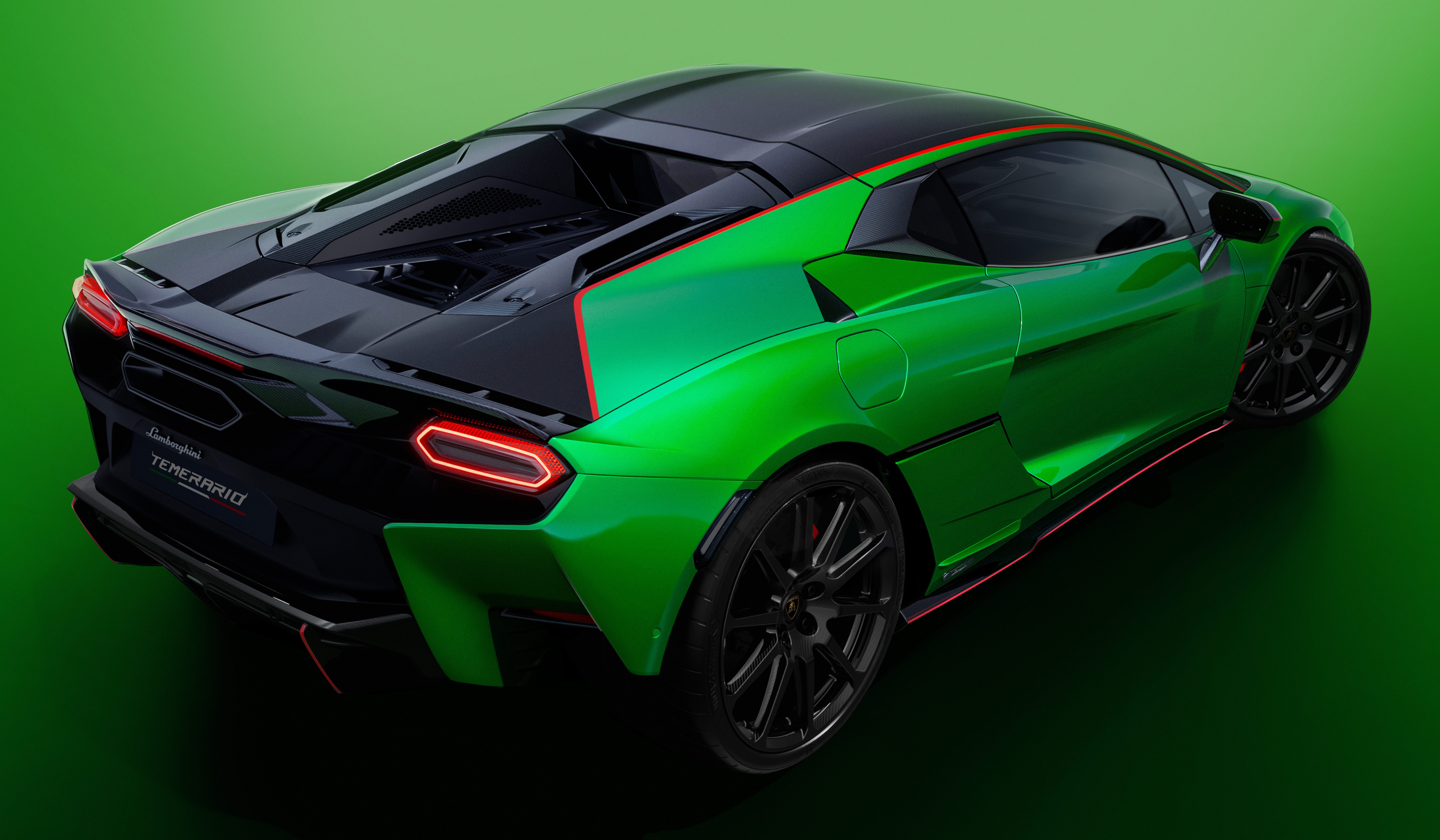
“It should be always raw and noisy, and you should feel the feedback, also the vibration, of the steering wheel,” Winkelmann said. “This is what we want; this is the emotional part of performance.
“But if you sit in and drive this type of car, you should be able to come out of the car and remember the experience of driving a Lamborghini, not back exhaustion.”
Related articles
- If you enjoyed reading about the new Lamborghini Temerario, you might like to check out our Lamborghini Huracán Sterrato review: Let’s off-road… in a £230,000 supercar
- And don’t miss this Italian police-spec 657bhp Lamborghini Urus Performante
- You might also like to check out the sci-fi inspired Ferrari 12Cilindri, powered by a 819bhp unassisted V12 engine (video)
Latest articles
- F1 2025 calendar and race reports: The new Formula One season as it happens

- Zeekr 7X AWD 2025 review: A fast, spacious and high tech premium SUV — but someone call the chassis chief

- Denza Z9GT 2025 review: Flawed but sleek 1,062bhp shooting brake from BYD’s luxury arm

- Extended test: 2024 Renault Scenic E-Tech review

- Best-selling cars 2025: The UK’s ten most popular models of the year so far

- Audi A6 Avant 2025 review: Trusty executive estate ticks expected boxes, and there’s still a diesel option

- Keir Starmer eases pressure on carmakers to sell EVs in response to ‘global economic headwinds’

- Ferrari 12Cilindri Spider review: Heady blend of traditional and futuristic becomes even more intoxicating after lid is removed

- Skoda reveals its fastest accelerating production car yet: the electric Elroq vRS



